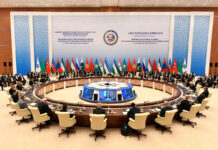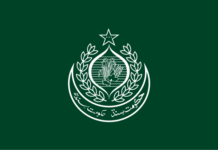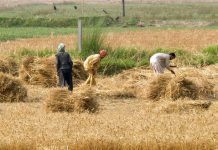
LAHORE: As the post-budget debate and details unfold, the government has set its targets and goals for the upcoming financial year 2020-21 in wake of the pandemic crisis and the locust threat that is swarming across several provinces which could exacerbate food shortage across Pakistan.
Considering the precarious financial situation and doldrums the economy has been in for almost two years and the tepid economic growth that was showing signs of slow recovery before the pandemic were nullified in a matter of a few months.
The spread of the coronavirus put a spanner in the works of the finance ministry and the State Bank of Pakistan (SBP) was compelled to take immediate action to lower interest rates which were already facing heavy criticism from the business community and others alike for being too high.
Despite the fiscal constraints hampering the government, the government rolled out a budget that some analysts have at termed a ‘traditional’ one. The capital market was anticipating some relief measures which would help prop up the Pakistan Stock Exchange but most brokerage houses in their reports termed it as a disappointment.
As opposed to previous years, the hooting and noises during the budget presentation were more nuanced due to the 25% limitation on the MNAs being present in the National Assembly. Normally, budgets have been shoddy and abusive affairs exhibited as a mud-slinging exercise or to disown the incumbent administration for all the financial ills plaguing the economy. Ironically, the process of rinse and repeat in Pakistan’s history is not a shock or setback, this has been an existential problem for decades.
Presently, Pakistan’s economy is on ventilator support and the pandemic has hit it in the core of its heart. As the first wave of coronavirus cases rise and our overwhelmed but inadequate healthcare system teeters on the brink of collapse, the cost of human lives that have been lost and its increase will reverberate for years to come.
The potential of Pakistan cannot be doubted, its population bulge of which youth form a major bulk of it are entering the economy at a stage where unemployment is high, and lack of job opportunities limited. Debt obligations remain high, some sort of relief has been provided by the G20 recently which could provide some breathing space to the incumbent administration to manage its finances.
The locusts swarming across several provinces and wreaking havoc is creating a serious food security and shortage situation as the crops get devastated. Provincial governments in tandem with the centre have tried to work on eradicating the locust threat that could do catastrophic damage to our agriculture sector which constitutes over 20% or more of our gross domestic product (GDP).
Balance of payment (BoP) crisis remains the biggest threat to the government like in previous fiscal years. The net foreign exchange reserves held by the State Bank of Pakistan (SBP) decreased $266 million to $10.096 billion, during the week ending June 5, 2020.
Since the end of April, forex reserves have been steadily declining due to external debt repayments. The largest weekly decline in a decade of $1.712 billion in SBP’s forex reserves was recorded during the week ending May 29th.
Tax revenue collection target like yesteryears was missed as well, however, despite the pandemic eating into collection receipts, the Federal Board of Revenue (FBR) was lagging before that. Also, on the remittances front, the next fiscal year will be a major challenge since a lot of expatriates residing in the Middle East have either been laid off or been sent back to Pakistan depriving the economy of one of its major sources of foreign exchange.
With the economy facing its first recession in almost sixty-eight years, the finance ministry and the economic planners face a huge task to resuscitate an economy that has already faced its share of boom and bust cycles over the past few decades. As external debt obligations come due during the next fiscal year 2020-21, the rupee could come under sustained pressure and further depreciate against the US dollar.
This would hit the poor and the middle class the hardest as their household budgets would get squeezed and expenditures arise as the rupee loses its value making things more difficult for households.
Arsalan Soomro, Managing Director at KASB Securities on Twitter while speaking about the budget said, “The budget targets increased tax revenues on bets of optimistic recovery despite the adverse impact of coronavirus. Tax targets would be missed by margins only to be compensated by reduced PSDP.”
Mr Soomro said that the government has reduced import duties on local industries, but the quantifiable impact is not material. It is aimed at marginal relief at best. However, clear focus is seen in the construction sector because of increased allocation to housing and dams supported by falling duties.”
He noted, “Taxes increased on tobacco and oil products. No pertinent increase in salaries/pensions reflects that the government is well within the IMF’s restructuring program. The derailment of such would have irked investor confidence. No new taxes. Hoping for a vaccine. Stability continues.
He concluded that Pakistan is continuing fiscal consolidation, reducing the primary deficit, decreasing energy subsidies, increasing ease of business and encouraging import substitution and supporting the construction sector.






















